This post may contain affiliate links. Please read our disclosure policy.
A simple how-to for flavor-packed Greek rice-stuffed vegetables (Gemista/Yemista). This “one size fits all” recipe works wonders for Greek stuffed peppers, zucchini, eggplant, onion, and tomatoes! Best of all, this recipe is naturally gluten-free, dairy-free, and packed with color, flavor, and nutrients!
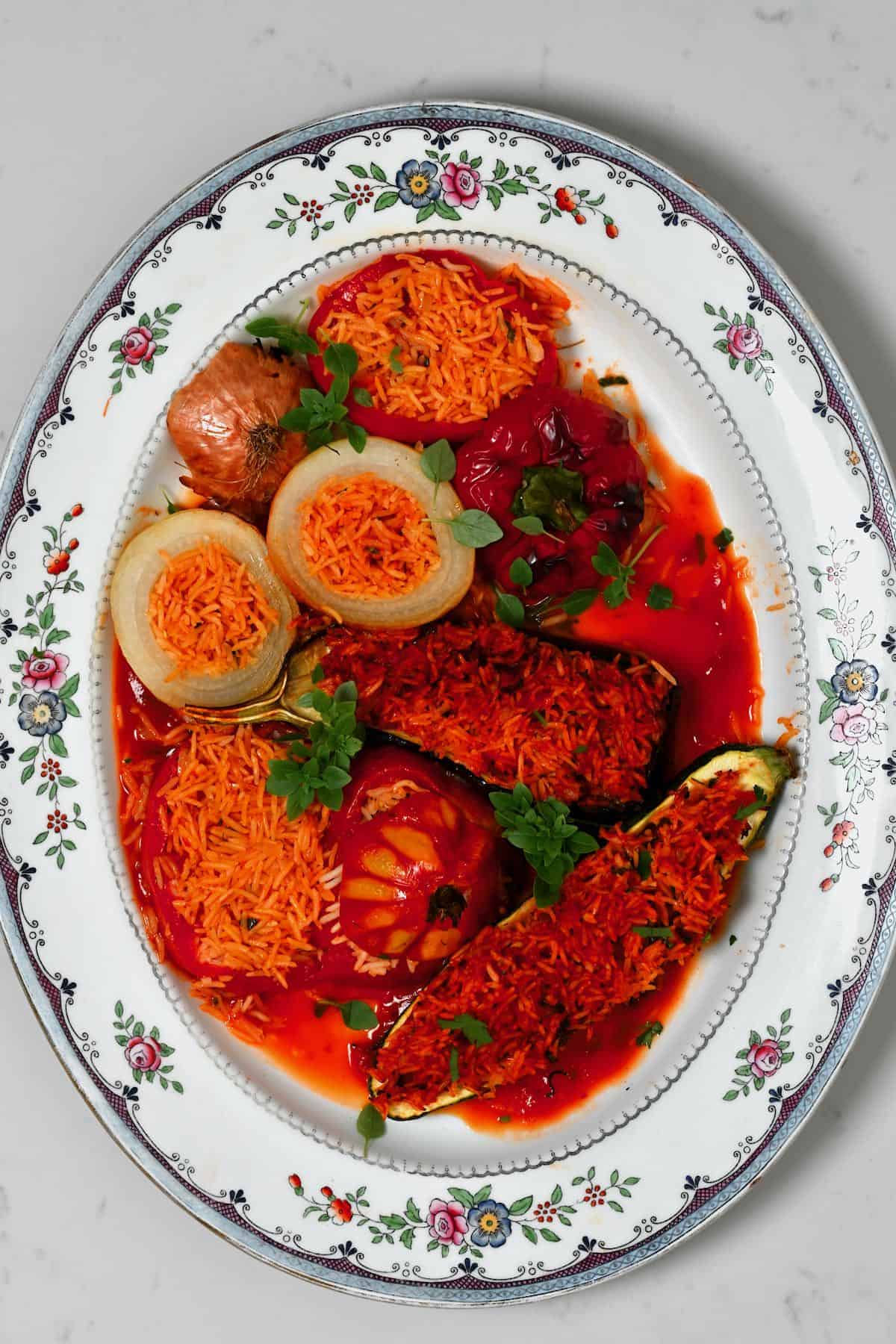
I recently posted a summer-ready recipe for Greek stuffed tomatoes. However, with summer quickly coming to an end, I realized it’s the perfect time to post these mixed Greek stuffed vegetables. Stuffed with a flavorful tomato rice filling, you can enjoy these Greek stuffed peppers, zucchini, eggplant, and more any time you want something healthy, hearty, and comforting!
All of these stuffed veggies come under the Greek “Gemista/Yemista” banner, which refers to something that’s “stuffed” or “filled with”. I’m certainly not being stingy with this stuffed vegetable recipe, either. With options to choose from, including Greek stuffed peppers, eggplant, zucchini, tomatoes, and even onions – there’s a stuffed vegetable recipe for everyone!
And, while it’s traditionally a summer dish, the choice of vegetables to stuff makes these a great option year-round! Did I mention that they’re 100% meat-free too? Which makes them great as a vegetarian appetizer or side for the protein of your choice.
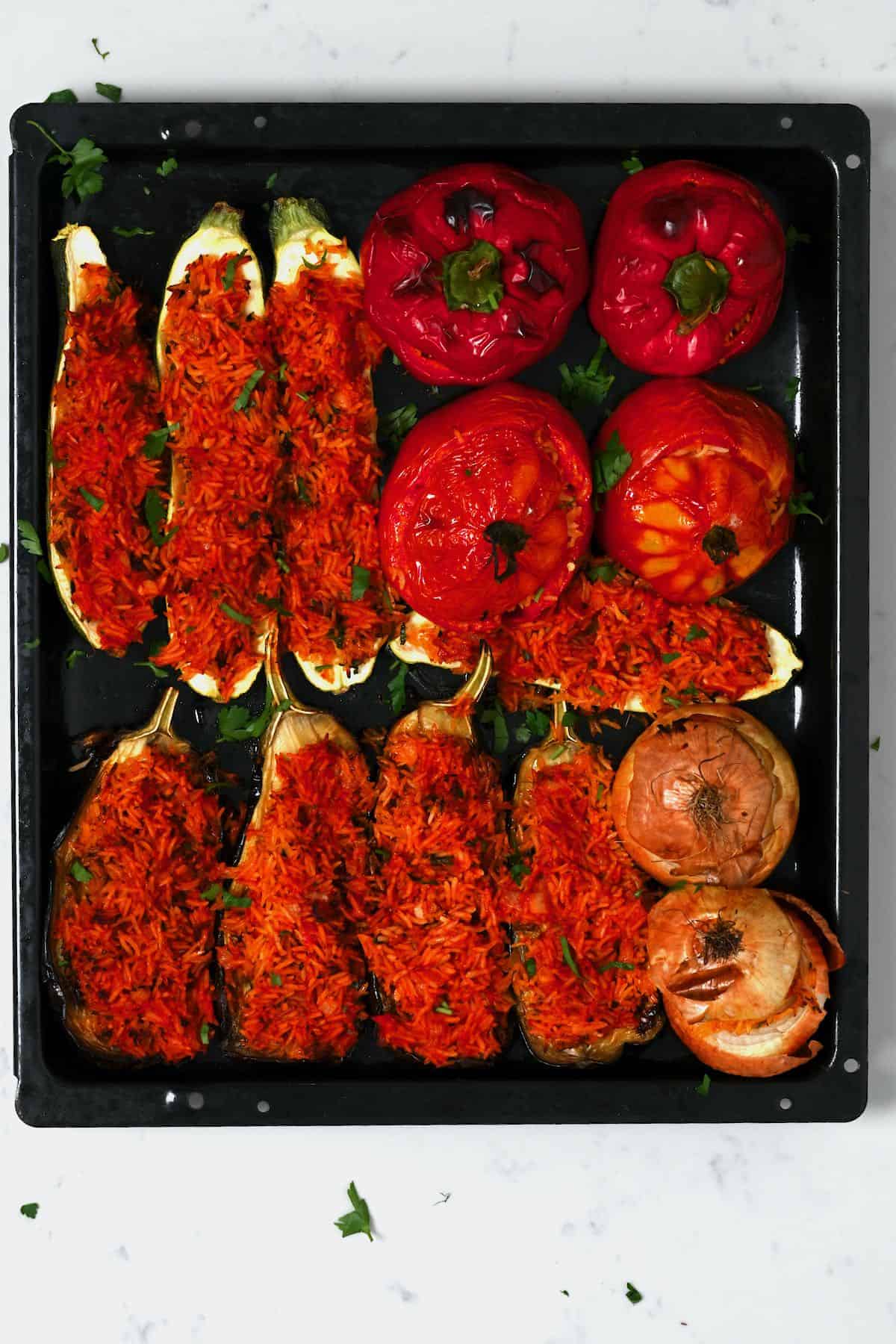
This stuffed vegetables recipe uses a simple method that has you par-bake the vegetarian rice filling before filling the vegetables and baking to perfection – the result is perfectly cooked rice encased in a tender vegetable shell. Enjoy them as a delicious and nutritious appetizer, side, or main. Plus, you can enjoy them as vegetarian or vegan stuffed vegetables (with a cheesy topping)!
These Gemista/yemista aren’t the first time I’ve stuffed vegetables either. For more inspiration, you might like these recipes for stuffed eggplants, stuffed grape leaves, rainbow chard, pumpkin, butternut squash, and even carrots!
Want to save this recipe?
Table of Contents
The Gemista Ingredients
- The vegetables to stuff: I used a combination of eggplant, zucchini, onions (white), bell peppers, and large tomatoes.
- Rice: I recommend using short or medium-grain rice. If you use long-grain rice (like basmati), you’ll need to increase the initial stovetop baking time to ensure it’s at least 90% cooked before going in the oven. It may require more time in the oven too.
- Onion: You can use white or yellow onion.
- Tomato paste: I used homemade tomato paste.
- Herbs/Spices: these healthy rice-stuffed veggies use a simple combination of dried mint and salt as the “spices.” As for herbs, I’ve used a combination of fresh parsley and dill, but you can experiment with others like oregano, thyme, mint, etc.
- Olive oil: use high-quality extra virgin olive oil.
- Optional toppings: feel free to add lightly toasted pine nuts and cheese to top the stuffed veggies. You can use a “melty” cheese like cheddar (added in the last 5 minutes of baking). Alternatively, garnish the Greek stuffed peppers and veggies with crumbled feta (dairy or dairy-free) when serving.
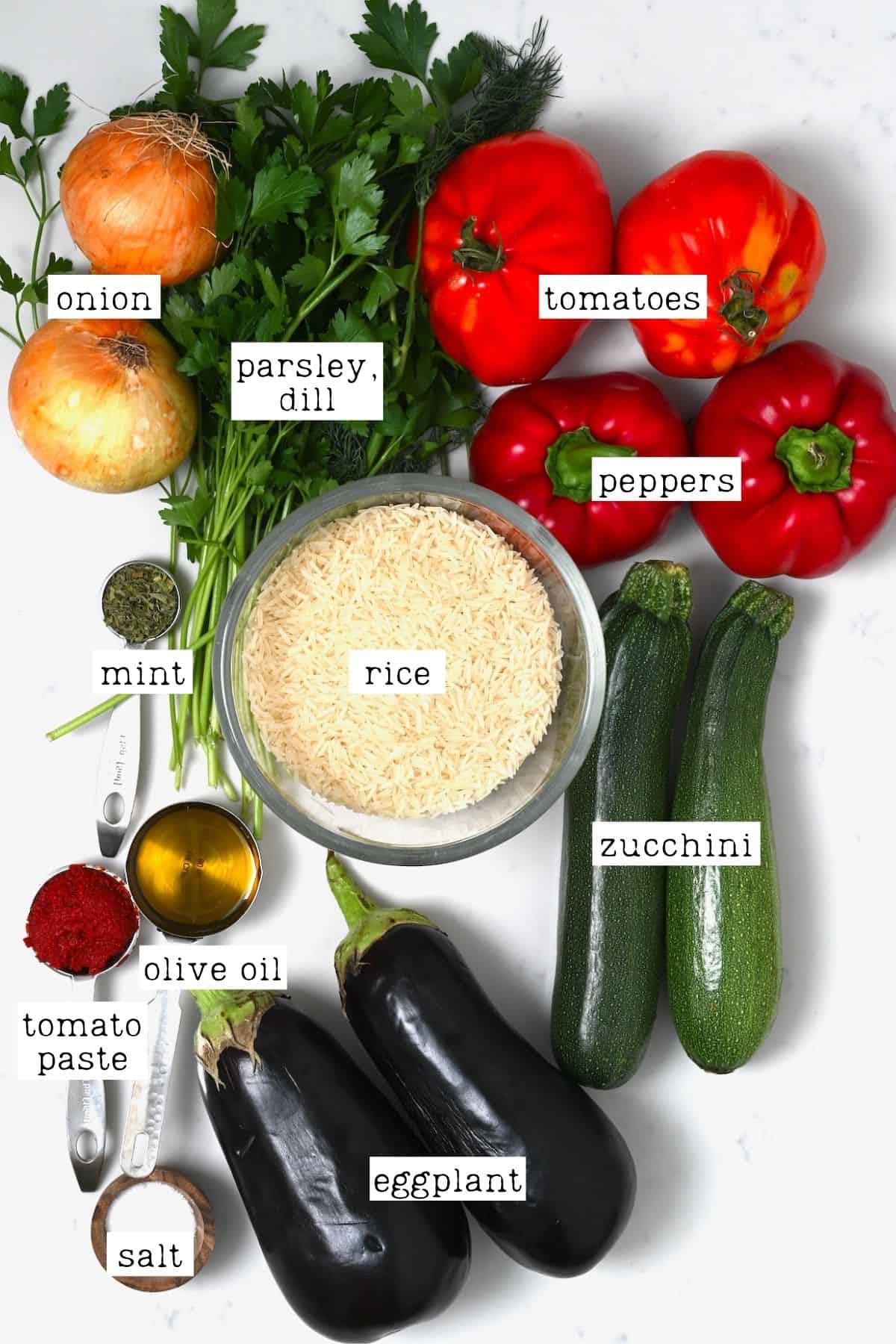
Optional Add-ins and Recipe Variations
- Stuffing other vegetables: this simple Greek tomato rice stuffing works well for other vegetables. These include potatoes, mushrooms (sauteed first to remove extra liquid), squash/pumpkin, cabbage leaves, artichoke, etc. However, the baking times will vary.
- Lemon: serving the yemista with lemon wedges is a great way to enhance the flavor and add an extra “brightness” to the Greek rice-stuffed vegetables.
- Vegetables: feel free to enhance the nutrients in these Greek stuffed vegetables with finely chopped vegetables added into the rice filling. I recommend peppers, spinach, carrot (grated), potatoes, corn, peas, shredded broccoli, etc. You could also make for a heartier filling with the addition of legumes like lentils, chickpeas, or beans.
- Other seasonings: this veggie tomato rice filling will pair wonderfully with all sorts of dried herbs, including oregano, thyme, basil, cumin, Italian seasoning, Mexican/taco seasoning, etc.
- For spice: feel free to add chili/cayenne pepper or pepper paste to the rice filling. You could also top them off with a sprinkle of dried red pepper flakes.
- Raisins: you can use golden or dark raisins added into the rice mixture.
- Protein: You could add marinated crumbled tofu, tempeh, or vegan mince (or soy protein), for extra protein. Sauté it in a skillet to cook.
How to Make Stuffed Vegetables (Gemista/Yemista)
Step 1: Core the vegetables
First, wash and dry the vegetables well. Then, core them, scooping out their flesh and transferring it to a bowl.
To core the peppers, tomatoes, and onions (peel or leave unpeeled), first slice off the top and then use a spoon to scoop out the middles (ensuring you don’t pierce the veggie “walls”). For the zucchini, slice them in half lengthwise first. Then use a spoon to scoop out the flesh, leaving a thin “wall.”
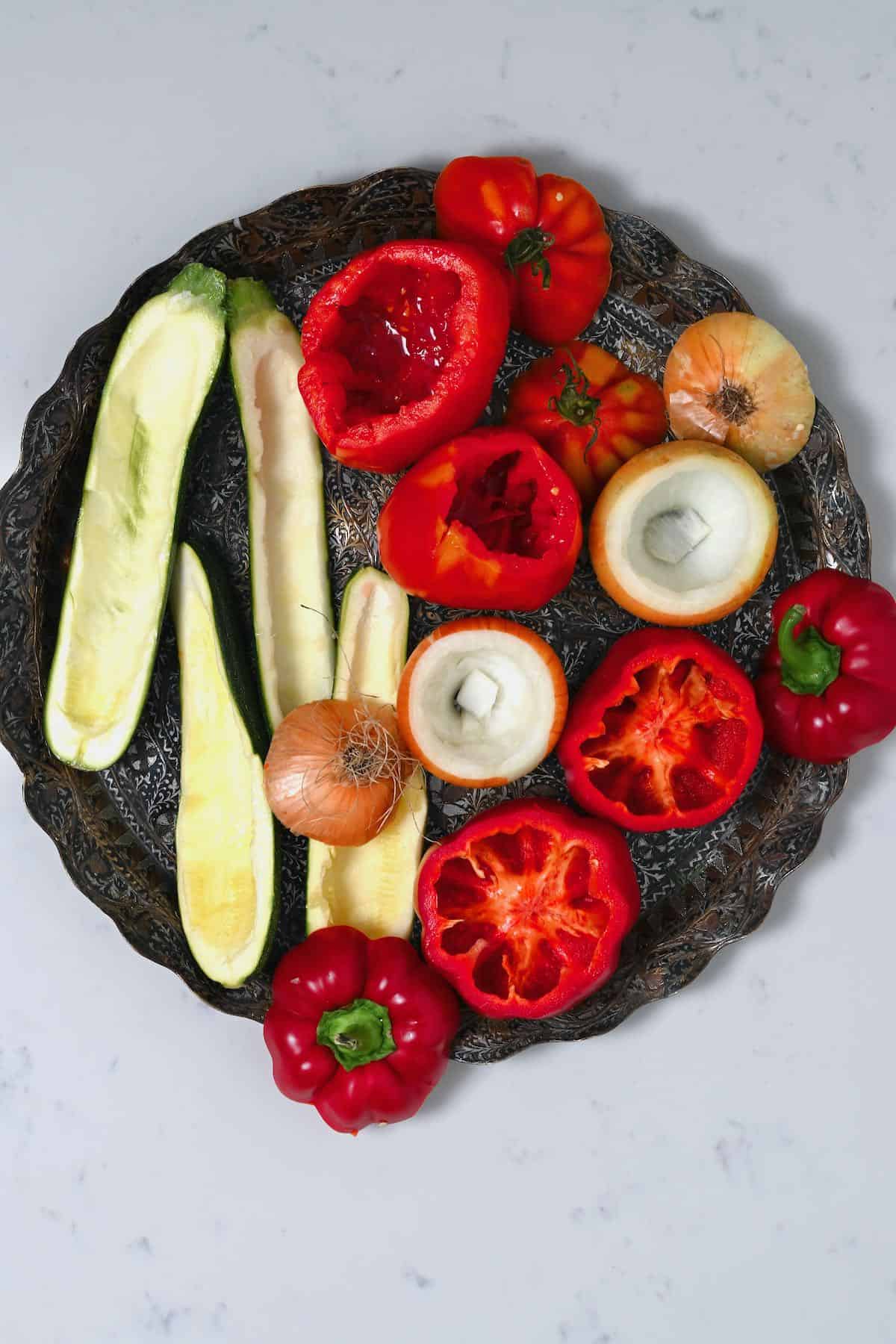
For the eggplant, I recommend pre-baking it (without coring). Slice the eggplant in two, score lightly down the middle of each half, and then bake for about 15 minutes at 400ºF/200ºC.
You can also optionally fry the zucchini and onions before stuffing them to tenderize and “brown” them slightly. However, I skip this “extra step” to save time and still love the results.
Once all the vegetables are prepared, oil them (inside and out) and lay them on a large baking tray.
Step 2: Prepare the tomato “sauce”
Heat the oil in a saucepan over medium heat and finely dice the onions (if you’re making stuffed onions, you can use the scooped-out flesh without needing any extras). At the same time, mince the herbs, and rinse the rice (until the water runs almost clear).
Add the chopped onions to the pan and cook, stirring often, until translucent (3-4 minutes). Then add all the remaining vegetable pulp (roughly chopped), the tomato paste, and salt, mixing well.
Finally, add the rinsed rice and water, mix well, and then cover and cook until around 90% cooked (follow the package instructions, minus 2-3 minutes). Just before it’s ready, add in the minced herbs and dried mint and stir to combine.
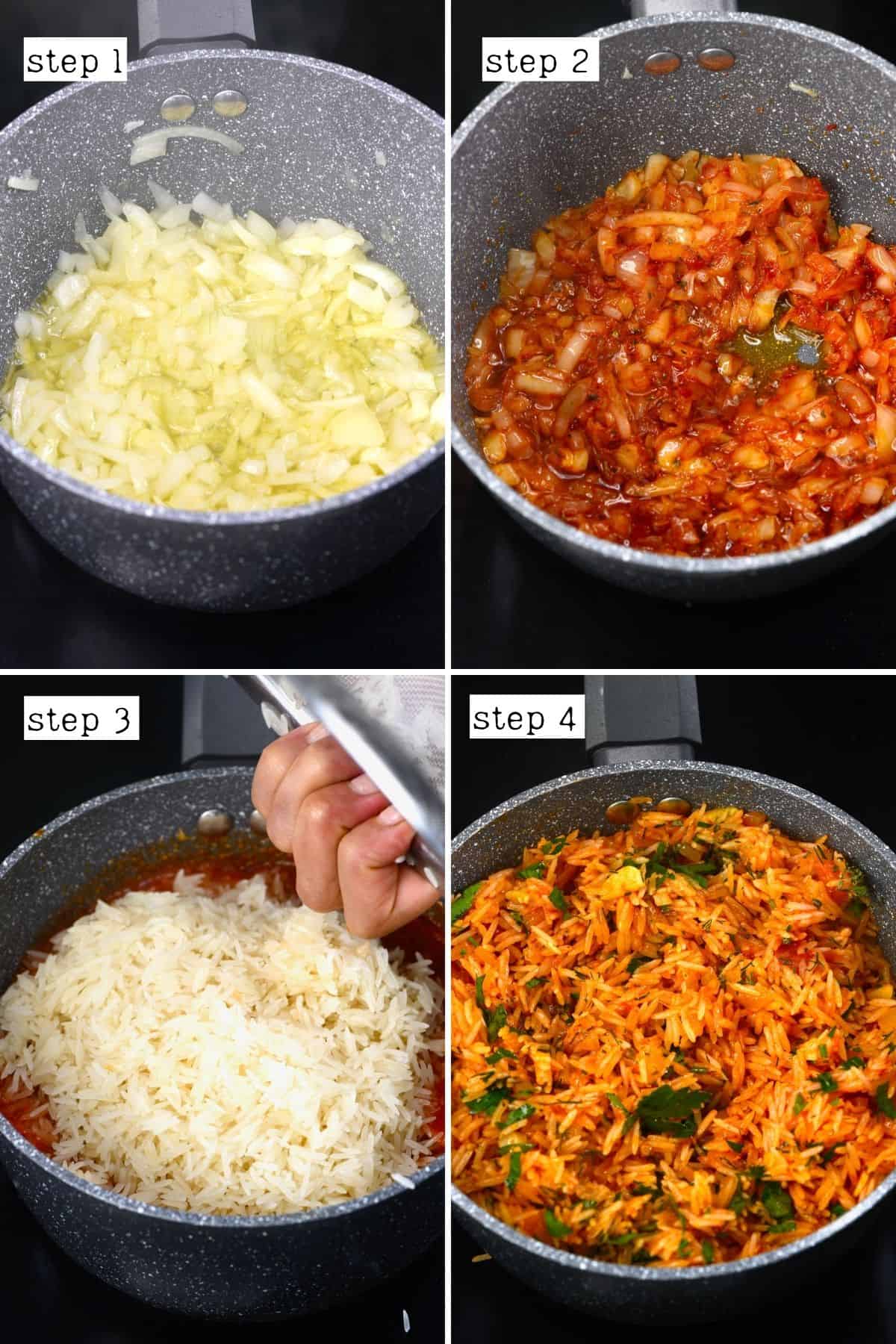
Step 3: Bake the stuffed vegetables
Stuff the vegetables with the rice mixture, making sure not to overfill, as the rice will still slightly expand when baking in the oven. Once filled, add all the “lids” to the vegetables. Then bake for between 30-35 minutes at 400ºF/200ºC, or until the vegetables are tender with a cooked rice filling.
The open-faced veggies (zucchini and eggplant) can “dry out” slightly while baking. To avoid this, bake the stuffed vegetables covered in tinfoil (the entire pan) for the first 20 minutes.
Optionally, you can broil the vegetables at the beginning (before stuffing) or at the end of the baking process for more of a char on the veggies.
Finally, remove the Greek stuffed vegetables from the oven and serve optionally topped with extra herbs, cheese (like feta or vegan feta), tzatziki, or a dollop of yogurt (dairy or dairy-free), and some lemon wedges. I also recommend further drizzling with high-quality extra-virgin olive oil before serving.
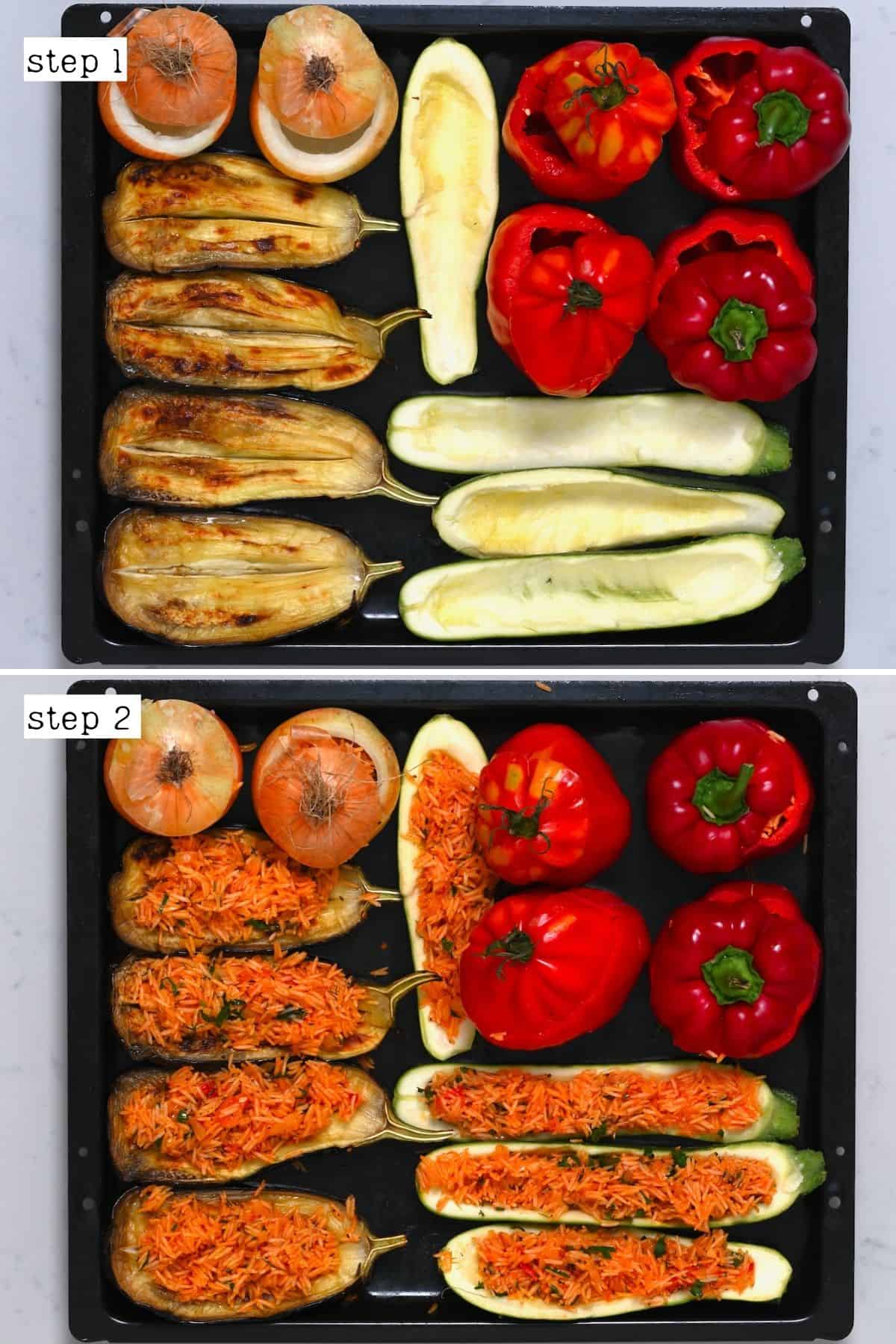
How to Make Ahead and Store
Make ahead: you can core and stuff the vegetables up to a day in advance. Store them, tightly wrapped, in the refrigerator until you’re ready to bake. You can also freeze the rice-stuffed vegetables pre-baking for between 2-3 months (be aware that certain vegetables – particularly tomatoes – are more likely to “collapse” when thawed and baked. They won’t look great but will taste amazing, still).
Store: once baked, allow the stuffed vegetables to cool and then store in an airtight container for up to four days.
Reheat: you can reheat the baked stuffed vegetables either in the microwave or in the oven, in a large baking pan filled with around a cup of water at 400ºF/200ºC, until thoroughly warmed.
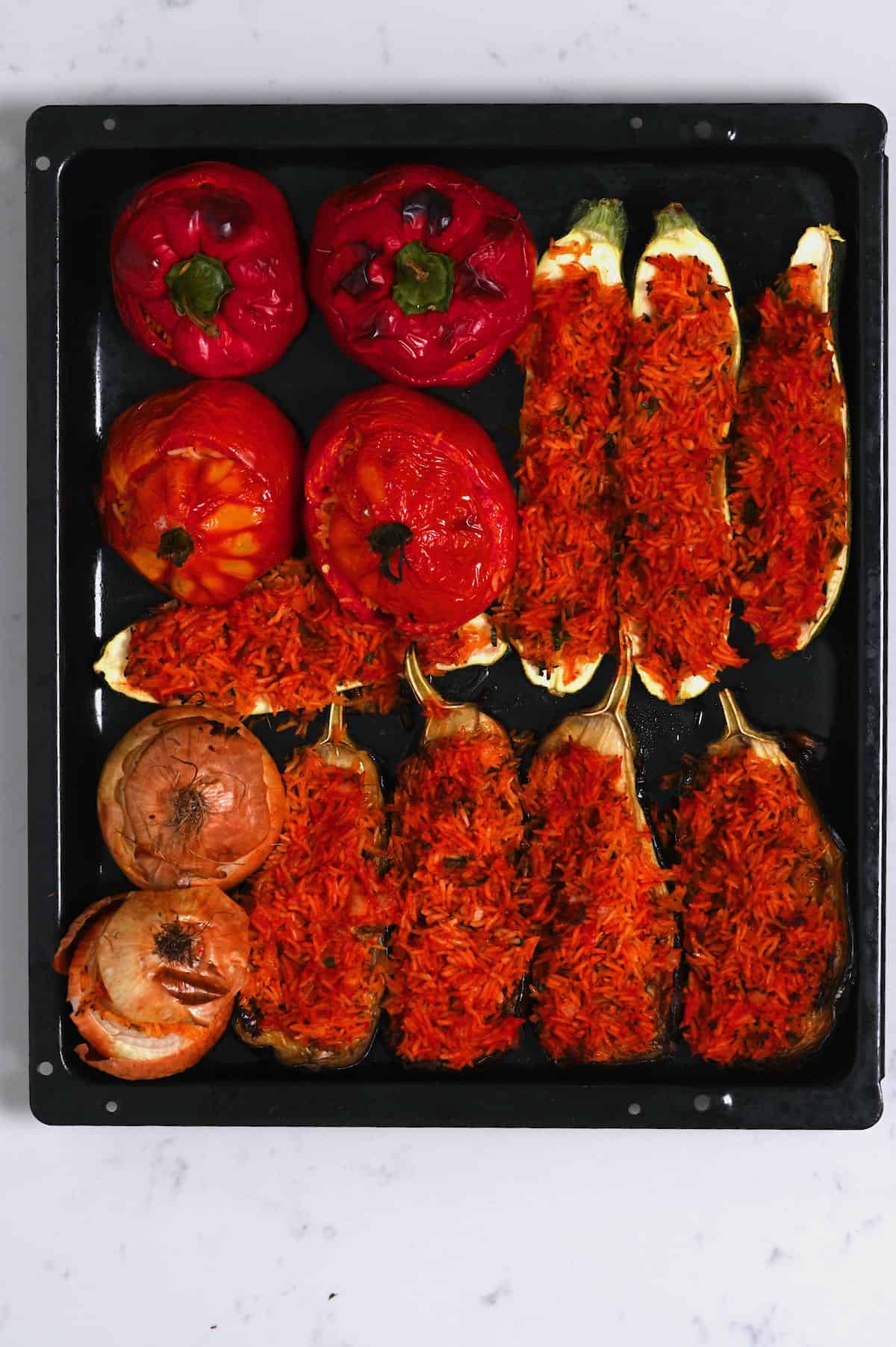
How to Serve Stuffed Vegetables?
You can enjoy these Greek stuffed vegetables as a hearty appetizer or part of a main alongside potato fries, wedges, and/or a leafy green salad (or veggie salad like this Shirazi salad). You could also serve them as a side to your protein of choice. I also like to serve yemista with Greek pita bread!
Enjoy the leftovers chilled or warm – they taste amazing either way!
Let me know in the comments what your favorite way to enjoy gemista is!
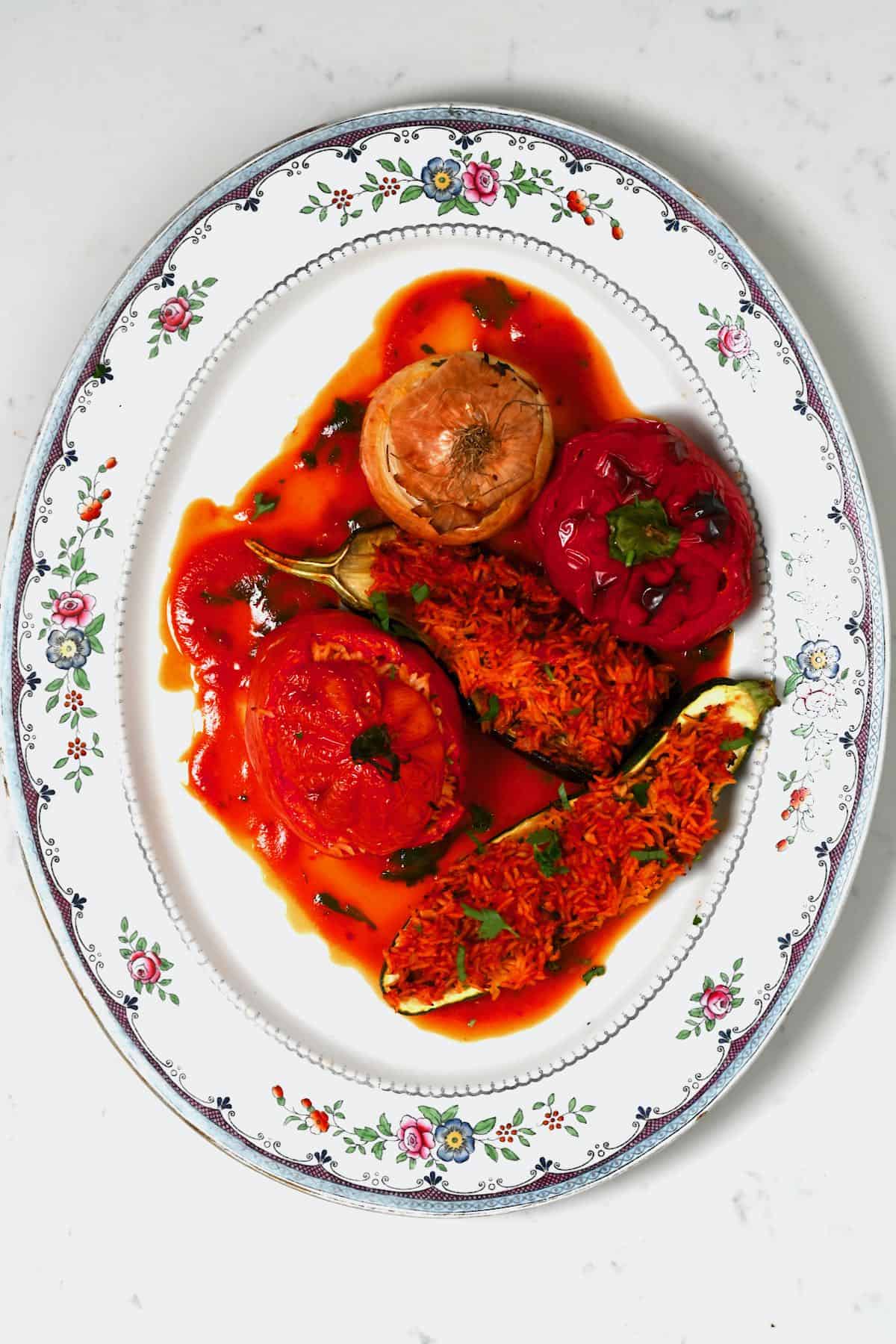
Recipe Notes and Top Tips
- Cook this gemista recipe “ladera” style: in Greek cooking, there is a method called “ladera,” meaning “with oil” that relies on lots of high-quality olive oil to add silky mouthfeel and a melt-in-the-mouth texture. These stuffed veggies are perfect for that and can handle up to 1/3 – 1/2 cup oil (in total). Drizzle it into the filling and over the veggies before and after baking.
- For more tender onions: it’s best to pre-bake the onions slightly. To do this, wrap the onions in foil and bake with the eggplant at the beginning. If you aren’t using eggplant, I recommend baking the cored onions at 355ºF/180ºC for 30 minutes). Then stuff and bake once more. Alternatively, you can peel and boil the onions for 10-15 minutes (until tender but still firm) before coring, stuffing, and baking.
- Make enough for leftovers: as they “sit” in the fridge overnight, the flavors develop further, and they’ll taste even better! Enjoy the Greek stuffed peppers/tomatoes and other veggies cold or warmed.
- Adapt the veggies to the season: for both what you’re stuffing and what’s in the stuffing, adapt the recipe to the season for a dish you can enjoy year-round.
- Experiment with other grains: feel free to try this recipe with other grains like couscous, barley groats, or quinoa. Follow a similar method by par-cooking the grain to 90%, then finish it off in the oven. Adjust the liquid ratio and stovetop cooking time accordingly.
- If any veggies seem a little dry: you can spoon over some of the collected juices from the bottom of the baking tray (if there are any).
More Comforting Veggie-Based Recipe
- Oven-roasted corn with garlic butter
- Lebanese lentil soup
- Chana masala (curried chickpeas)
- Mediterranean vegetable buddha bowl
- Sweet potato breakfast hash
- Chinese garlic eggplant stir-fry
- Tomato eggplant pasta (pasta alla Norma)
- Wild mushroom ragu
- Easy Vegetable Rice Pilaf (Yellow Turmeric Rice | Vegan)
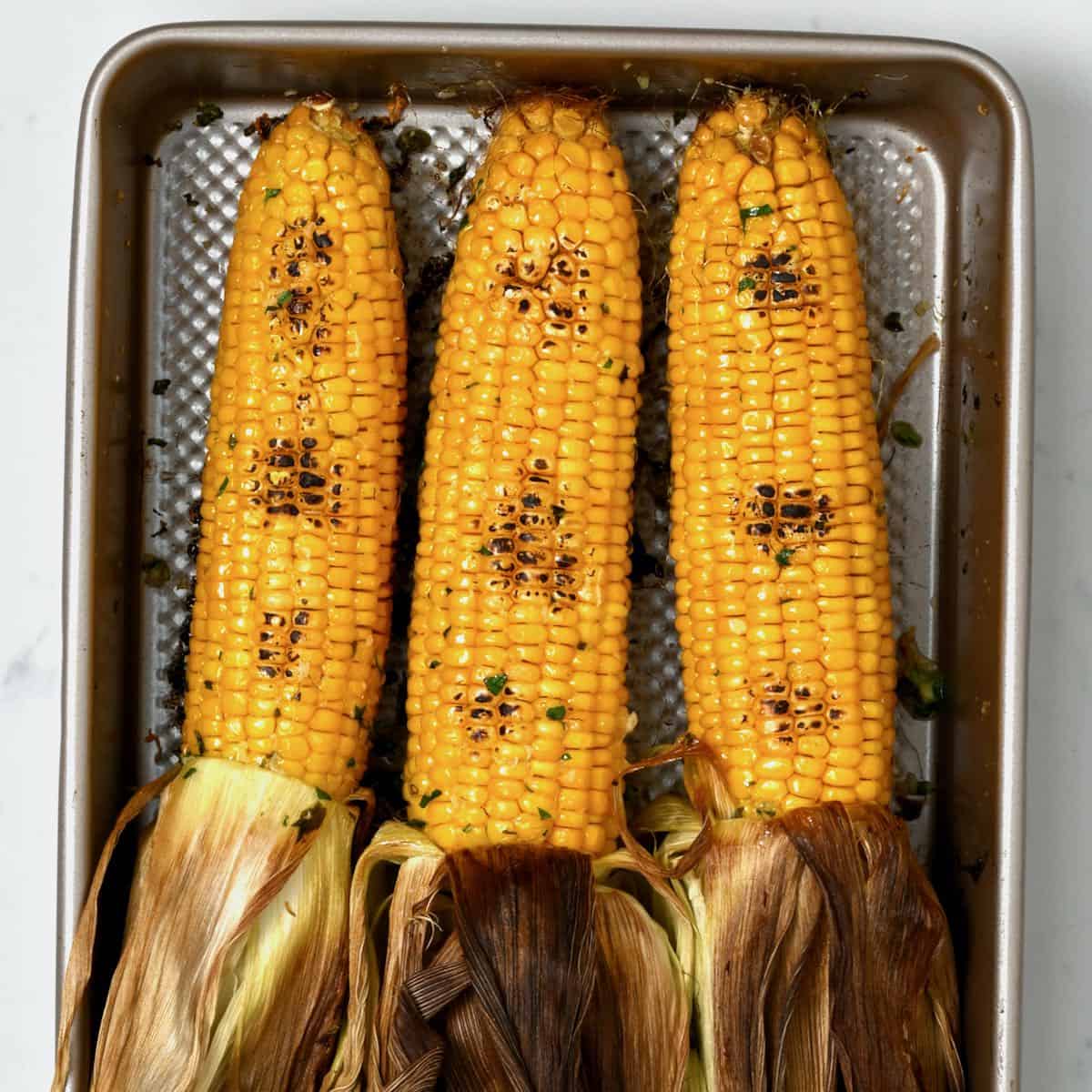
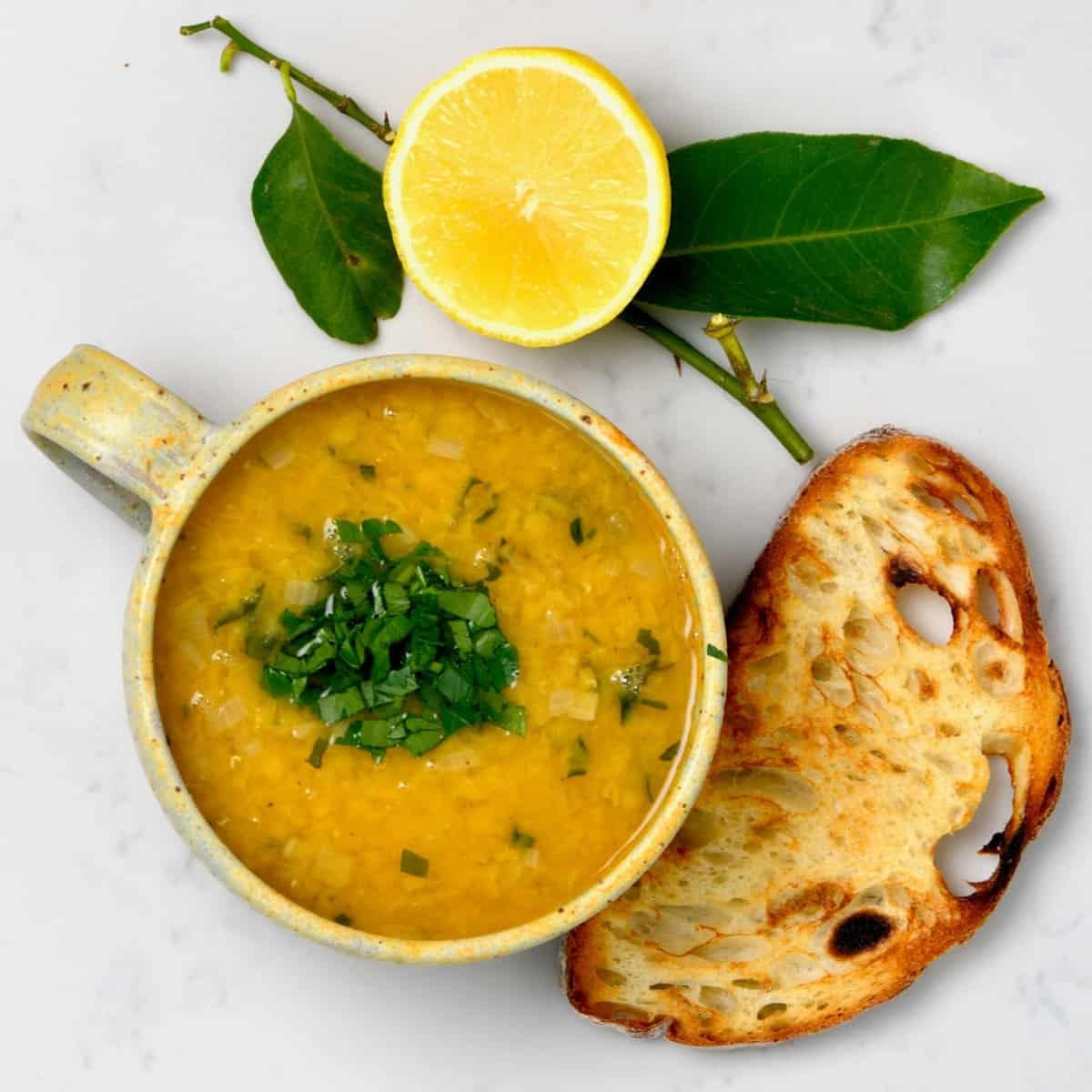
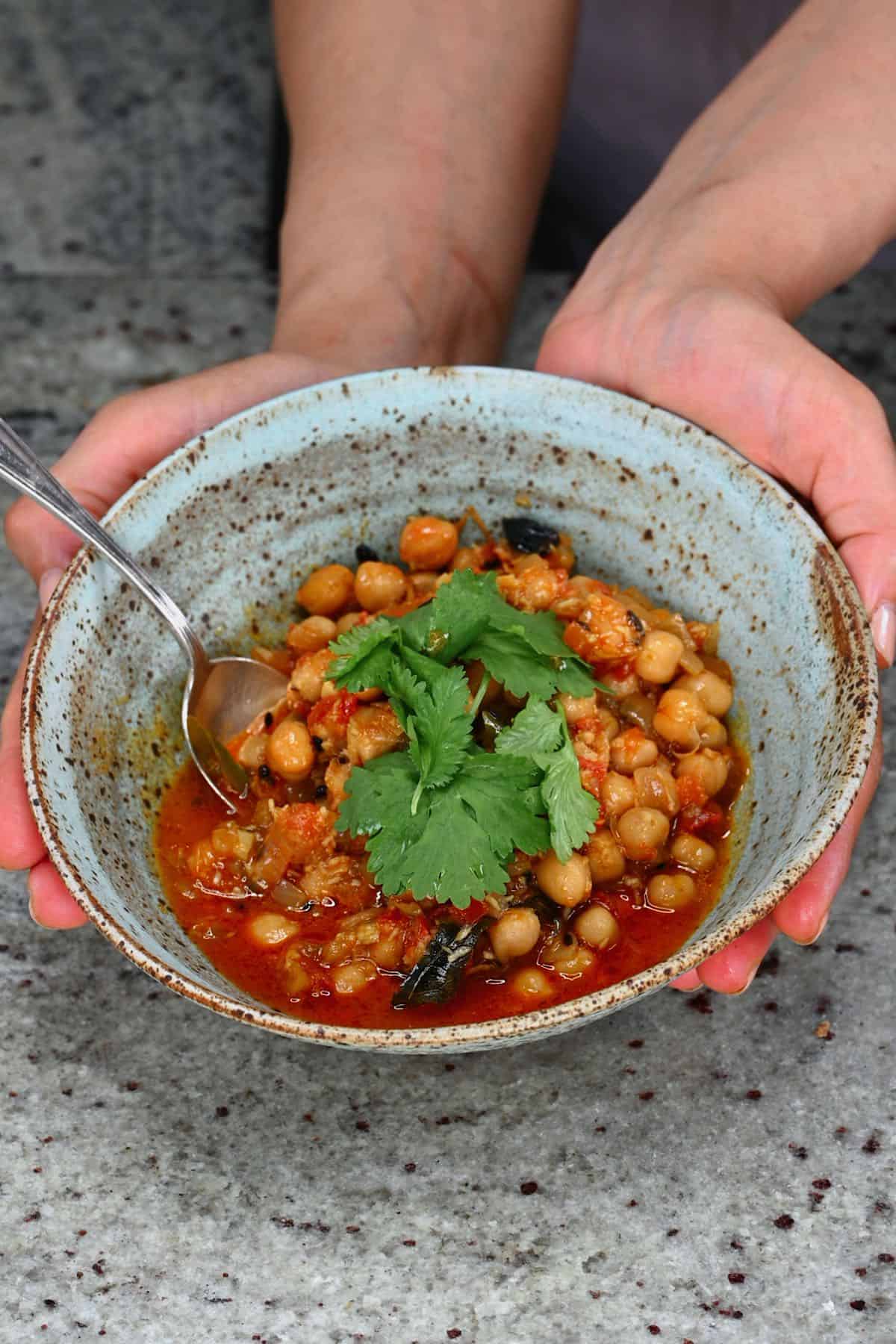
If you try this healthy Greek stuffed vegetables (Gemista) recipe, I’d love to hear your thoughts/questions below. Also, I’d appreciate a recipe card rating below, and feel free to tag me in your recipe recreations on Instagram @Alphafoodie!

Greek Stuffed Vegetables with Rice (Gemista/Yemista)
Ingredients
Veggies (use all the same or a combination of your liking)
- 2 eggplants
- 2 zucchini
- 2 bell peppers red, green, or yellow
- 2 large tomatoes
- 2 large onions
For the stuffing
- 2 cup rice short or mid-grain rice
- 2 cup water
- 7 oz onions 2 medium-sized; white or yellow
- 1/4 cup olive oil
- 1 Tbsp tomato paste
- 1/2 tsp salt
- 1 oz parsley or dill or a bit of both
- 1/4 tsp dried mint
Instructions
Step 1: Core the vegetables
- Wash and dry the vegetables well.
- Core them, scooping out their flesh and transferring it to a bowl.To core the peppers, tomatoes, and onions (peel or leave unpeeled), first slice off the top and then use a spoon to scoop out the middles (ensuring you don't pierce the veggie "walls"). For the zucchini, slice them in half lengthwise and then use a spoon to scoop out the flesh, leaving a thin "wall."
- For the eggplant, I recommend pre-baking it (without coring). Slice the eggplant in two, score lightly down the middle of each half, and then bake for about 15 minutes at 400ºF/200ºC.You can also optionally fry the zucchini and onions before stuffing them to tenderize and "brown" them slightly. However, I skip this "extra step" to save time and still love the results.
- Once all the vegetables are prepared, oil them (inside and out) and lay them on a large baking tray.
Step 2: Prepare the tomato "sauce"
- Heat the oil in a saucepan over medium heat and finely dice the onions (if you're making stuffed onions, you can use the scooped-out flesh without needing any extras). At the same time, mince the herbs, and rinse the rice (until the water runs almost clear).
- Add the chopped onions to the pan and cook, stirring often, until translucent (3-4 minutes). Then add all the remaining vegetable pulp (roughly chopped), the tomato paste, and salt, mixing well.
- Add the rinsed rice and water, mix well, and then cover and cook until around 90% cooked (follow the package instructions, minus about 4 minutes). Just before it's ready, add in the minced herbs and dried mint and stir to combine.
Step 3: Bake the stuffed vegetables
- Stuff the vegetables with the rice mixture, making sure not to overfill, as the rice will still slightly expand when baking in the oven. Once filled, add all the "lids" to the vegetables.
- Bake for between 30-35 minutes at 400ºF/200ºC, or until the vegetables are tender with a cooked rice filling.The open-faced veggies (zucchini and eggplant) can "dry out" slightly while baking. To avoid this, you can bake the stuffed vegetables covered in tin foil (the entire pan) for the first 20 minutes before removing it for the last ten minutes.Optionally, you can broil the vegetables at the beginning (before stuffing) or at the end of the baking process for more of a char on the veggies.
- Remove the Greek stuffed vegetables from the oven and serve optionally topped with extra herbs, cheese (like feta or vegan feta), tzatziki, or a dollop of yogurt (dairy or dairy-free), and some lemon wedges. I also recommend further drizzling with high-quality extra-virgin olive oil before serving.
How to Make Ahead and Store
- Make ahead: you can core and stuff the vegetables up to a day in advance and store them, tightly wrapped, in the refrigerator until you're ready to bake them. You can also freeze the rice-stuffed vegetables pre-baking (be aware that certain vegetables – particularly tomatoes – are more likely to "collapse" when thawed and baked. They won't look great but will taste amazing, still) for between 2-3 months. Store: once baked, allow the stuffed vegetables to cool and then store in an airtight container for up to four days.Reheat: you can reheat the baked stuffed vegetables either in the microwave or in the oven, in a large baking pan filled with around a cup of water at 400ºF/200ºC, until thoroughly warmed.
Notes
- Cook this gemista recipe “ladera” style: in Greek cooking, there is a method called “ladera,” meaning “with oil” that relies on lots of high-quality olive oil to add silky mouthfeel and a melt-in-the-mouth texture. These stuffed veggies are perfect for that and can handle up to 1/3- 1/2 cup oil (in total). Drizzle it into the filling and over the veggies before and after baking.
- For more tender onions: it’s best to pre-bake the onions slightly. To do this, wrap the onions in foil and bake with the eggplant at the beginning. If you aren’t using eggplant, I recommend baking the cored onions at 355ºF/180ºC for 30 minutes). Then stuff and bake once more. Alternatively, you can peel and boil the onions for 10-15 minutes (until tender but still firm) before coring, stuffing, and baking.
- Make enough for leftovers: As they “sit” in the fridge overnight, the flavors develop further, and they’ll taste even better! Enjoy the Greek stuffed peppers/tomatoes and other veggies cold or warmed.
- Adapt the veggies to the season: for both what you’re stuffing and what’s in the stuffing, adapt this stuffed vegetables recipe to the season for a dish you can enjoy year-round.
- Experiment with other grains: feel free to try this recipe with other grains like couscous, barley groats, or quinoa. Follow a similar method by par-cooking the grain to 90%, then finish it off in the oven. Adjust the liquid ratio and stovetop cooking time accordingly.
- To grill the stuffed veggies: if it’s still grilling weather, then no need to turn on the oven. Instead, use some yarn or kitchen twine to tie the top and bottom of the filled veggies together, brush with a bit of oil, wrap in tin foil, and then grill for 10-15 minutes, until tender with a fully cooked stuffing.
- Stuffing other vegetables: this simple rice stuffing works well for other vegetables, like potatoes, mushrooms (sauteed first to remove extra liquid), squash/pumpkin, cabbage leaves, artichoke, etc. However, the baking times will vary.
- Lemon: serving the yemista with lemon wedges is a great way to enhance the flavor and add an extra “brightness”.
- Vegetables: feel free to enhance the nutrients in these Greek stuffed vegetables with finely chopped vegetables added into the rice filling. I recommend peppers, spinach, carrot (grated), potatoes, corn, peas, shredded broccoli, etc. You could also make for a heartier filling with the addition of legumes like lentils, chickpeas, or beans.
- Other seasonings: this rice filling will pair wonderfully with all sorts of dried herbs, including oregano, thyme, basil, cumin, Italian seasoning, Mexican/taco seasoning, etc.
- For spice: feel free to add chili/cayenne pepper or pepper paste to the rice filling. You could also top them off with a sprinkle of dried red pepper flakes.
- Raisins: you can use golden or dark raisins added to the rice mixture.
- Protein: you could add marinated crumbled tofu, tempeh, or vegan mince (or soy protein), for extra protein. Sauté it in a skillet to cook.
Nutrition
Nutrition information is automatically calculated, so should only be used as an approximation.














